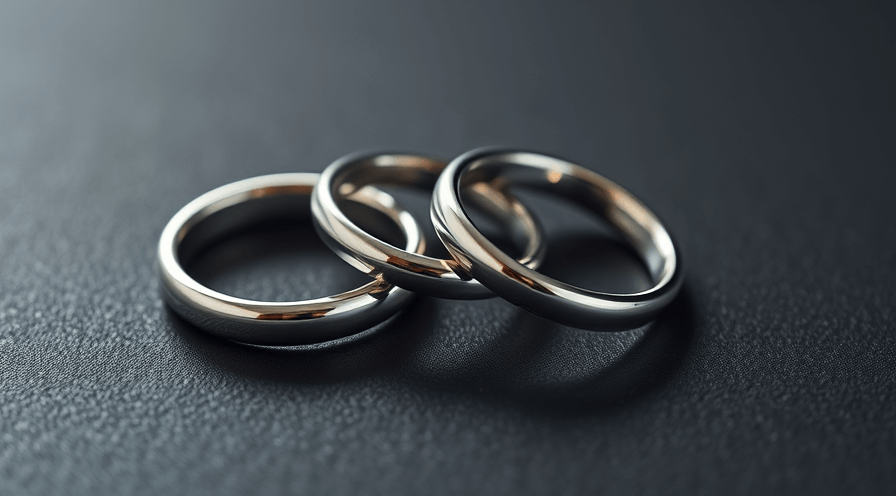Sterling Silver vs. Stainless Steel Jewelry: Which Lasts Longer?
When deciding between sterling silver and stainless steel jewelry, durability and longevity often emerge as key considerations. Both materials hold strong appeal due to their distinct qualities and aesthetic versatility, but which one truly lasts longer? This comparison explores essential factors such as composition, wear resistance, maintenance, and style retention to help consumers make an informed choice based on durability and everyday practicality.
Material Composition and Properties
The Nature of Sterling Silver
Sterling silver consists of 92.5% pure silver alloyed typically with 7.5% copper or other metals to enhance strength. Silver is prized for its bright luster, smooth finish, and classic elegance. However, pure silver is a soft metal, and alloying is necessary to improve its sturdiness. Despite this, sterling silver remains relatively prone to scratching, bending, and tarnishing over time.
Characteristics of Stainless Steel
Stainless steel is an alloy primarily made of iron, carbon, and a minimum of 10.5% chromium, which protects it against corrosion and oxidation. It may also include small amounts of nickel, manganese, or molybdenum depending on the grade. Its robust nature gives it exceptional strength, scratch resistance, and a sleek modern look. Unlike sterling silver, stainless steel does not tarnish, which significantly impacts its longevity in jewelry use.
Durability and Wear Resistance
How Sterling Silver Holds Up
Sterling silver’s softness makes it vulnerable to dents and deformation if subjected to rough handling. Additionally, it naturally oxidizes when exposed to air and moisture, forming a tarnish layer. While tarnish can be polished away, repeated cleaning may wear thin delicate pieces over time. For those who wear their jewelry daily, sterling silver may require more care and occasional maintenance to keep its shine.
Stainless Steel’s Strength Advantages
Stainless steel jewelry is widely favored for its impressive hardness and resistance to physical damage. It withstands impacts, abrasions, and scratches far better than sterling silver. Its resistance to tarnish and rust, even when exposed to water, sweat, and chemicals, makes it a prime choice for active users or those living in humid environments. This capacity to endure daily wear and tear without significant deterioration clearly positions stainless steel as a long-lasting jewelry option.
Maintenance and Care Requirements
Caring for Sterling Silver Jewelry
Maintaining sterling silver jewelry involves regular cleaning to prevent tarnish buildup. Users typically employ specialized silver polishes or mild soap solutions followed by thorough drying. It’s advisable to store pieces in anti-tarnish pouches or airtight containers when not worn. Though these steps keep sterling silver looking its best, they require time and effort that some may find inconvenient.
Ease of Maintaining Stainless Steel
Stainless steel is low-maintenance and easily cleaned with warm water and mild soap. It rarely requires polishing since it does not tarnish. Simply buffing with a soft cloth is sufficient to restore its shine after exposure to dirt or oils. This minimal care demand is highly attractive to modern consumers seeking durable jewelry that maintains appearance with little upkeep.
Aesthetic Longevity: Retaining Style and Shine
Sterling Silver’s Timeless Appeal
Sterling silver offers a classic appeal, beloved for its warm white sheen and ability to complement both casual and formal attire. Although it requires polishing, it can maintain a brilliant shine for decades when properly cared for. Its traditional value and hypoallergenic nature add to its desirability, making it a staple in fine jewelry collections.
Modern Trends Favoring Stainless Steel
Stainless steel jewelry caters to contemporary tastes with its sleek and industrial look. It often appears in bold designs like chunky bracelets, rings, and watches. Its color consistency remains intact without fading, contributing to sustained visual appeal. For those who prefer a rugged yet refined aesthetic, stainless steel delivers long-lasting style without the worry of tarnish or discoloration.
Price and Value Over Time
- Sterling Silver: Typically more expensive upfront due to the higher material cost and craftsmanship involved. The necessity for maintenance could add recurring expenses.
- Stainless Steel: Generally more affordable and budget-friendly. Its durability reduces replacement frequency, offering better value for long-term wear.
In terms of resale or collectible value, sterling silver may hold an advantage because of its intrinsic precious metal content, whereas stainless steel is more about practical wear and affordability.
Conclusion: Which Jewelry Lasts Longer?
Ultimately, stainless steel surpasses sterling silver in terms of sheer durability, resistance to wear, and ease of maintenance, making it the best option for jewelry intended to withstand daily use and environmental challenges. Sterling silver appeals to those prioritizing timeless elegance and precious metal content despite requiring more attention to care. Choosing between sterling silver vs. stainless steel jewelry depends on lifestyle, aesthetic preference, and willingness to maintain. For lasting longevity with minimal upkeep, stainless steel is the preferred choice; for classic sophistication with traditional value, sterling silver remains irreplaceable.
If longevity and low-maintenance are priorities in jewelry selection, readers are encouraged to explore stainless steel collections. Conversely, those drawn to refined luxury might investigate sterling silver designs and proper care techniques. Whichever metal is chosen, understanding their unique properties ensures an investment that lasts as long as the memories it accompanies.
